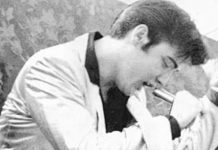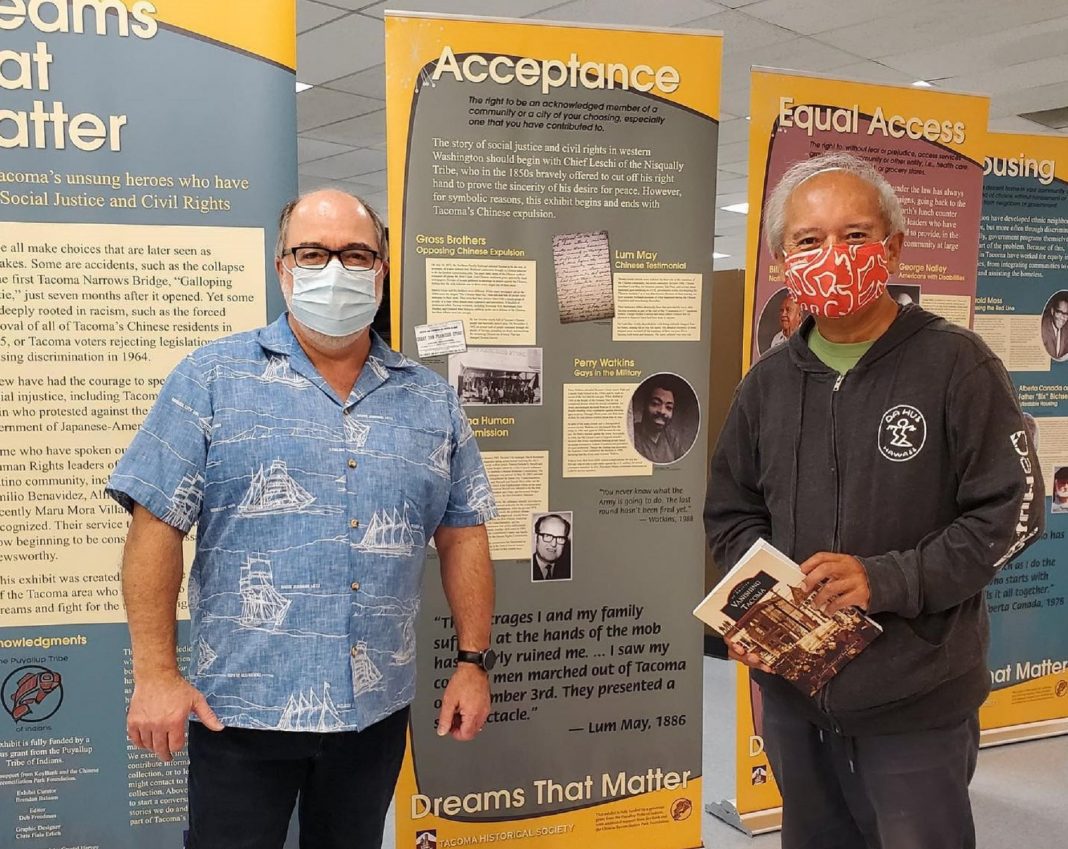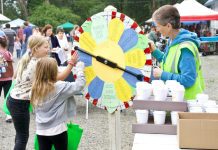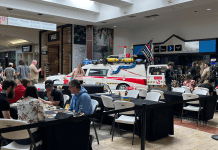Every business, every theater, every restaurant, and every person on the planet had to adapt to the “new normal” of the changing landscape of pandemic living during the last year. Social distancing, stay-at-home orders, masks, and rescheduled – or canceled – events led to Facebook Live concerts, Zoom presentations and online exhibits.
Pierce County Museums, for example, didn’t just go dark when visitors weren’t able to flow through their displays and exhibits freely. Rather than just wait things out – for what was first thought to be only a few weeks of staying home in mid-2020, they brought the exhibits to be would-have-been visitors in whatever way they could. It’s a practice that will carry on well after all this COVID-19 business fades into memory to eventually become historical displays and archives in the same museums that operated through it.

“It was a year of hard work, but it was also a year of subsequent growth and resilience,” Washington State Historical Society Director of Exhibitions and Programs Mary Mikel Stump said. The museum created online exhibits, videos and digital celebrations for Martin Luther King Junior, Veterans, and Day of Remembrance to mark the day Japanese Americans were sent to internment camps during World War II. Those annual events would have all been in-person activities during non-pandemic times. The museum also found itself advising non-profit museums around the state while it searched for new ways to exhibit its own content. The museum, for example, updated the galleries with new carpet and exhibitions in the spaces. “I can’t believe that we have managed to make the magic that we have, but I am really proud of the work that we’ve done and the way that we didn’t just pivot, we pirouetted,” Mikel Stump said.
One addition to how the WSHS informs “visitors” about state history when they can’t stroll through the exhibits was the museum’s mobile app that allows anyone to access images and information about artifacts and displays for free and from anywhere.
“Going forward, some WSHS programs will be presented in a hybrid fashion with in-person and online options,” WSHS Communications Director Julianna Verboort said. “Others may be in-person only, and some may possibly be online only. We will continue to connect virtually and in-person as best suits each type of initiative and to meet the needs of our audiences.”

Suffice it to say, no time is a good time for a pandemic. The Tacoma Historical Society, however, found itself closed by the stay-at-home order last year, right as it was moving to a new location. That shuttling of exhibits and artifacts would have closed its operations regardless. The extended closure, even after the move, meant the society shifted to online discussions as well as added content to a new blog, its YouTube channel and podcast.
“We, unfortunately, don’t have a video record of programming from years past, but we can take this lesson from the pandemic and record our programs going forward,” THS Communications Manager Kim Davenport said.
Harbor History Museum Director Stephanie Lile said that beyond the shift to online exhibits and presentations that will continue in some form or another after the pandemic clears, museums need to explain better how they work and how they fund those operations.
“Most people don’t realize that much of what museums do is behind the scenes (conservation projects, collections cataloging, fielding research requests, planning exhibits at the Gig Harbor facility, creating publications, and adapting programs to alternate delivery formats,)” she said. “Most people thought that because we were closed to the public, we were entirely shut down. Not so. Conservation work on the FV Shenandoah continued because it was cleared as a Washington State Heritage Capital Project. Our programs went virtual, and we turned the museum ‘inside out’ with COVID-safe window exhibits.”
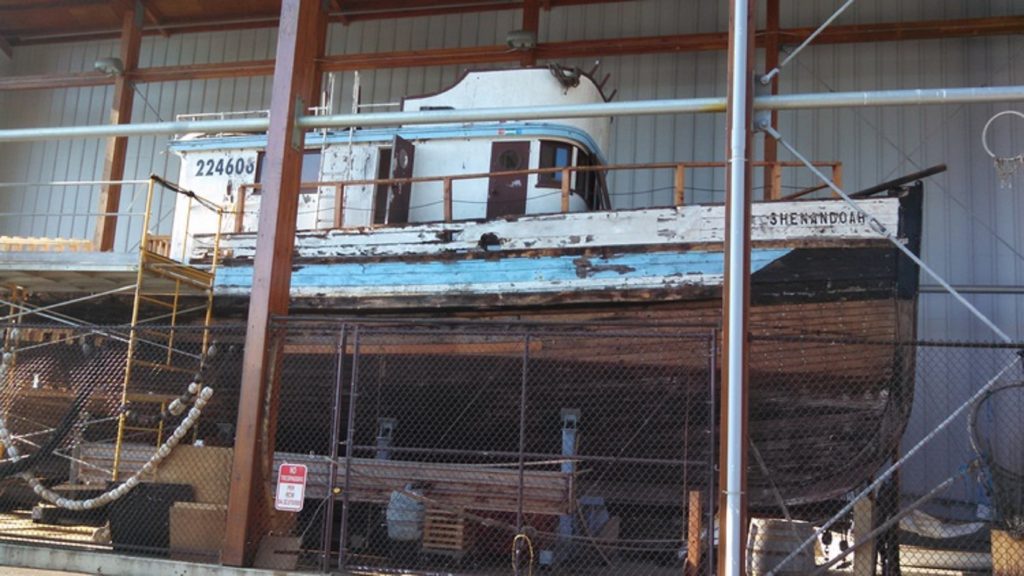
Lakewood’s Historic Fort Steilacoom used to be open just summer Sunday afternoons and the first Sunday of the month during the rest of the year for drop-in, no reservation tours of the former military buildings. The non-profit museum has since changed to just one Sunday a month, by reservation only to limit crowds and not overtax its all-volunteer docents.
While actual tours now require potential visitors not only to remember when the museum will be open and then reserve their tour times, the museum’s online presentations have brought all new interest in its collections. The fort’s three-talk series for Women’s History Month was particularly popular.
“We have four buildings from a fort that housed, based on the Army of the time, almost all men,” Fort Steilacoom Museum Association President Walter Neary said. “So, it’s interesting the largest single demographic group to engage with our pages is women ages 35 to 44. That tells me we are at least starting to be not just a military museum, which of course, is still very important, but also a museum about everyone who lived in Washington Territory, men, women, Natives and British and American settlers. It’s nice that we’ve had people from around the country at our events. You talk to people you just wouldn’t otherwise even meet.”
Alongside the virtual presentations, the clampdown on in-person tours also allowed the volunteer historians to reorganize its collections and operations.
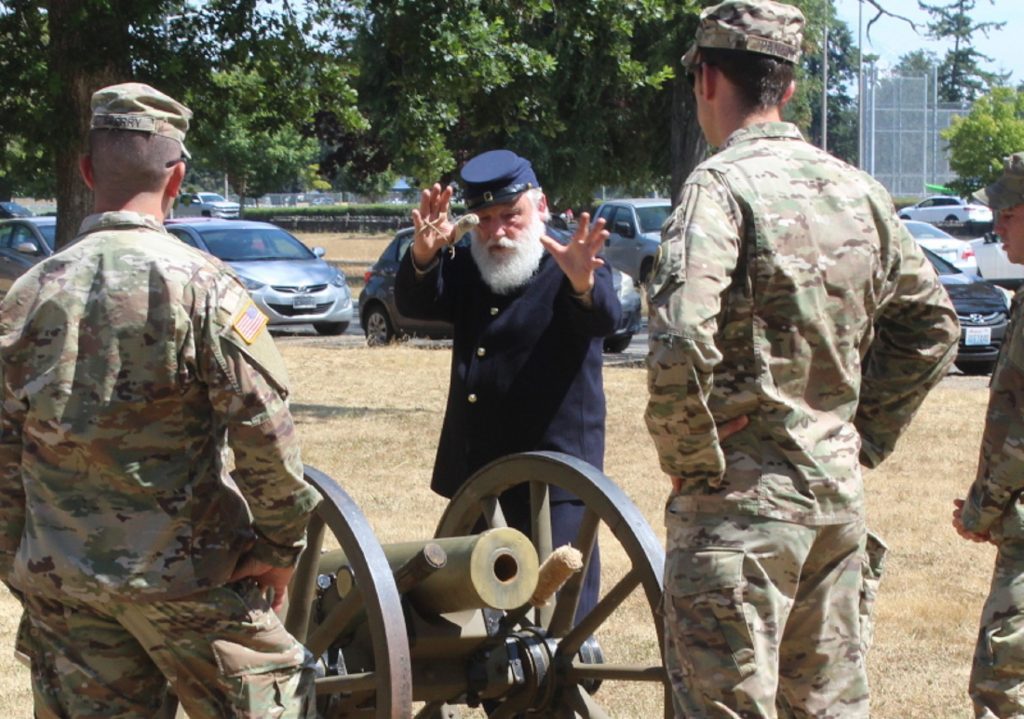
“We ended up taking the time to reorganize ourselves and bring new people onto the board, revisit exhibits, clean like mad, and essentially look inward to see what we can do better to interpret the complex story of early Washington Territory,” said Neary.
One historical fact that now has a new impact and significance is the once-lost story of Fort Steilacoom’s doctor, who helped the doctor at British Fort Nisqually to inoculate Native Americans with the smallpox vaccine during the outbreak of 1853.
“I include that in my talks now,” Neary said. “But one thing I’ve noticed on tours is that people aren’t usually eager to talk about the pandemic. They’re eager to be transported to 1859 and learn about life back in Washington Territory. People are delighted to be distracted — they’re appreciative, in fact.”





















